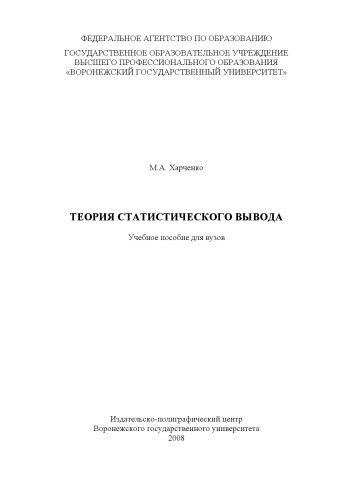- 2 402 202 книги
- Поиск
libcats.org










Studying Contemporary American Film: A Guide to Movie Analysis
Thomas Elsaesser, Warren BucklandAgainst the background of rising temperatures and shorter tempers among film theorists, 'Studying Contemporary American Film' sets out to pour oil on troubled waters. Between classical models of film interpretation and analysis (auteurist, structuralist, psychosemiotic) and the current plethora of contending paradigms (cognitivist, Deleuzian,
post-feminists, deconstructivist and hypertextual) it treads a
delicate, but determined path. The authors accept that film analysis is a matter of being wise after the fact, and being aware of open or hidden agendas. In order to be clear and consistent, you don't have to be dogmatic; being able to recognize the strengths and weaknesses of certain critical positions doesn't mean that 'everything goes'. Although centered on close analysis of nine mainstream movies, this is not just another collection of essays on the authors' favorite films. The distinction classical and post-classical narrative, the Hollywood/Europe divide, the co-existence of linear narrative and videogame logic, and the differences between ontological realism and digital realism are all lucidly laid out and practically demonstrated. Highlights - to this reader at least - are the chapters on Die Hard, Lost Highway, The Fifth Element and Silence of the Lambs. The general movie buff may think the bullet points and numbered sub-headings rather too prescriptive; however, the authors tone is for the most part refreshingly dead-pan and descriptive, and students may be grateful for the many useful hints of how to ask the right questions and structure their papers accordingly. This is a guide in the best tradition of 'Teach Yourself Film Studies', of which 'Studying Contemporary American Film' could be seen as a welcome sequel.
post-feminists, deconstructivist and hypertextual) it treads a
delicate, but determined path. The authors accept that film analysis is a matter of being wise after the fact, and being aware of open or hidden agendas. In order to be clear and consistent, you don't have to be dogmatic; being able to recognize the strengths and weaknesses of certain critical positions doesn't mean that 'everything goes'. Although centered on close analysis of nine mainstream movies, this is not just another collection of essays on the authors' favorite films. The distinction classical and post-classical narrative, the Hollywood/Europe divide, the co-existence of linear narrative and videogame logic, and the differences between ontological realism and digital realism are all lucidly laid out and practically demonstrated. Highlights - to this reader at least - are the chapters on Die Hard, Lost Highway, The Fifth Element and Silence of the Lambs. The general movie buff may think the bullet points and numbered sub-headings rather too prescriptive; however, the authors tone is for the most part refreshingly dead-pan and descriptive, and students may be grateful for the many useful hints of how to ask the right questions and structure their papers accordingly. This is a guide in the best tradition of 'Teach Yourself Film Studies', of which 'Studying Contemporary American Film' could be seen as a welcome sequel.
Популярные книги за неделю:

Проектирование и строительство. Дом, квартира, сад
Автор: Петер Нойферт, Автор: Людвиг Нефф
Размер книги: 20.83 Mb

Система упражнений по развитию способностей человека (Практическое пособие)
Автор: Петров Аркадий НаумовичКатегория: Путь к себе
Размер книги: 818 Kb

Сотворение мира (3-х томник)
Автор: Петров Аркадий НаумовичКатегория: Путь к себе
Размер книги: 817 Kb

Радиолюбительские схемы на ИС типа 555
Автор: Трейстер Р.Категория: Электротехника и связь
Размер книги: 13.64 Mb
Только что пользователи скачали эти книги:

Computational Intelligence for Agent-based Systems
Автор: Raymond S.T. Lee, Автор: Vincenzo Loia (eds).
Размер книги: 14.45 Mb

История древнего мира
Автор: Дьяконов И.М. , Автор: Неронова В.Д., Автор: Свеницкая И.С.Категория: Исторические
Размер книги: 14.25 Mb

Теория статистического вывода: Учебное пособие для вузов
Автор: Харченко М.А.Категория: Математическая статистика
Размер книги: 737 Kb

Лингвистические проблемы терминологии и научно-технический перевод - Часть 2
Автор: Лейчик В.М., Автор: Шелов С.Д.
Размер книги: 77.04 Mb

The Spiritualist A Story Of The Occult
Автор: Sabatini RafaelКатегория: fiction
Размер книги: 20 Kb

Having a Real Relationship with God (40-Minute Bible Studies) (Epub, Mobi & PDF)
Автор: Kay ArthurКатегория: Christian
Размер книги: 1.77 Mb






